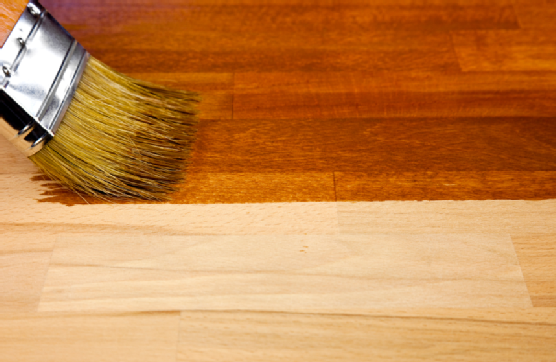Painting Wood in South Jersey
 Not only can you master painting & sprucing up the walls in your home, but you can also learn to be a pro at painting wood. With any job containing wood, you’re going to want to smooth the surface first. Sand the unpainted wood with grit paper that has a number of 150 or higher. If you want to tackle light sanding, use a 120 grit sandpaper. The higher the grit sandpaper, the smoother the wood, and surface of the wood. For previously painted woodwork, inspect the surface first. Remove bumps, drips, and runs with a sharp pull scraper. Fill any and all depressions with a no-shrink spackle. Sand everything with your grit sandpaper pushed in the same direction as the wood grain.
Not only can you master painting & sprucing up the walls in your home, but you can also learn to be a pro at painting wood. With any job containing wood, you’re going to want to smooth the surface first. Sand the unpainted wood with grit paper that has a number of 150 or higher. If you want to tackle light sanding, use a 120 grit sandpaper. The higher the grit sandpaper, the smoother the wood, and surface of the wood. For previously painted woodwork, inspect the surface first. Remove bumps, drips, and runs with a sharp pull scraper. Fill any and all depressions with a no-shrink spackle. Sand everything with your grit sandpaper pushed in the same direction as the wood grain.
Next you’ll want to dust and then wipe down the surface with a tack cloth. The tack cloth works best at grabbing dust particles and tiny wood fragments that could get in the way of your paint job. Once you’ve sanded and dusted the wood, you can begin painting. Priming anything before paint application is essential to provide the undercoat and topcoat of paint an even surface. It also aids in the absorption of paint, and helps cover the grains and various openings in the surface, creating a flat & smoother finish. Primer can also be diluted to help with the flow of paint during application. Always apply primer with a firm and consistent arm motion. Once primer is applied and has been allowed to set, you can now distribute paint. When painting be sure to take your time & distribute the paint evenly. Brush in the same direction as the wood grain using long, parallel strokes. Don’t load the paint brush with too much paint & try to keep an even coating with no drip. An important step before leaving your wood to dry is called the Tip Off. This involves unloading the brush, and gently dragging the soft ends over the wet paint. This step helps to even out brush marks and set the wood for even drying.
Once your wood is painted you can leave it alone. We don’t advise adding additional paint as you could end up with a rough and uneven finish. You should end up with wood that is appealing and that others will envy.







